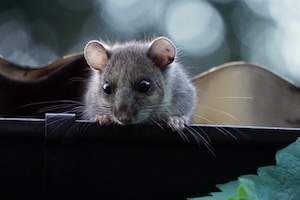How Bird Proofing Protects Your Home

Keeping your home well-maintained requires more than just seasonal cleaning and occasional repairs. Some of the most persistent and overlooked threats to a roof’s health come from nesting birds. A well-planned approach that includes gutter guard installation and effective bird proofing can help prevent damage, maintain water flow, and protect your home’s overall structure.
Birds may seem harmless at first glance, but their nesting habits can cause extensive issues over time. When birds choose your gutters, eaves, or roof cavities as nesting spots, the consequences can be both immediate and long-term. Debris from nests can block water flow, usually leading to water pooling on the roof or spilling over the edges of gutters. This overflow can cause rot in fascia boards, compromise roof integrity, and even lead to leaks inside your home.
One of the most common problems caused by bird activity is clogged gutters. Nesting materials like twigs, grass, and feathers mix with leaves and dirt already in the gutter system. The result is a dense blockage that prevents rainwater from draining properly. Over time, the extra weight of this debris and trapped water can pull gutters away from the roofline, leading to expensive repairs.
Beyond structural concerns, birds can introduce health risks. Their droppings can carry bacteria and fungi that are harmful to humans, while mites and parasites from nesting areas can find their way indoors. For families with children or pets, keeping these hazards at bay is a priority.
Bird proofing is about prevention. By installing deterrents and barriers in areas where birds are likely to nest, you can stopproblems before they start. Solutions range from discreet mesh coverings for gutters to spike systems that prevent birds from landing on ledges. The right bird proofing method depends on your home’s design, the type of birds common in your area, and your personal preferences for aesthetics.
Mesh barriers are particularly effective for roof edges and gutter systems. They allow water to pass through freely while keeping out larger debris, including nesting materials. For homes in areas with heavy bird activity, reinforced mesh or durable aluminium covers can withstand repeated attempts by birds to gain access.
In addition to preventing nesting, bird proofing helps protect the functionality of your rainwater management system. Gutters free of obstructions are better able to channel water away from your residence, decreasing the risk of water damage to the home. This also means fewer maintenance tasks, as there is less need for frequent gutter cleaning throughout the year.
Roof damage is another concern that bird proofing addresses. Some bird species are known to peck or claw at roofing materials to create nesting cavities. This can loosen shingles, dislodge tiles, and damage roof seals. Over time, such damage can allow water to penetrate beneath the roof surface, leading to leaks and costly interior repairs. By blocking access to these vulnerable areas, bird proofing helps preserve the integrity of the roof for years to come.
Bird proofing also plays a role in protecting solar panels. For homeowners who have already invested in solar energy,birds nesting underneath panels can cause wiring damage and restrict airflow, which may reduce panel efficiency. Special mesh skirts can be fitted around panels to keep birds from getting underneath, safeguarding both your investment and your energy output.
The process of implementing bird proofing usually starts with an inspection. A professional can identify existing nests, common entry points, and areas that are most vulnerable to future activity. Removing any current nests should be done in accordance with local wildlife regulations, as some bird species are protected and cannot be disturbed during certain times of the year.
Once vulnerable areas are identified, tailored solutions can be applied. For gutters, installing mesh covers or solid guards will prevent debris from collecting while allowing water to flow. For roof edges and open cavities, custom-fitted barriers ensure that birds cannot gain a foothold. Ledges and other landing spots can be equipped with spikes or angled strips that make perching uncomfortable, encouraging birds to move on without harming them.
Maintenance remains an important part of bird proofing. Even the most durable systems can benefit from periodic checks to ensure barriers remain intact and functional. Seasonal inspections, especially after storms, help confirm that nothing has shifted or loosened, leaving gaps that birds could exploit.

Homeowners often find that bird proofing delivers both immediate and long-term savings. By preventing gutter blockages, it reduces the frequency and cost of professional gutter cleaning. Protecting the roof and other structural elements helps avoid major repair bills down the line. And by reducing health hazards, it creates a safer environment for those living in the home.
Another overlooked benefit is the improvement in overall home appearance. Bird droppings on siding, driveways, and outdoor furniture can be unsightly and difficult to clean. By discouraging birds from roosting and nesting near the home, you keep exterior surfaces cleaner and reduce the need for constant upkeep.
For many homeowners, bird proofing is most effective when paired with a proactive maintenance schedule. Regularly clearing nearby trees and trimming overhanging branches can make the property less appealing to birds. Checking for small gaps in eaves, vents, and rooflines can also prevent birds from finding entry points into attic spaces.
While some bird-proofing solutions are available for DIY installation, professional services can provide a higher level of customisation and durability. Professionals have access to materials designed for long-term outdoor exposure and can ensure that barriers blend seamlessly with the home’s design. This means you can protect your property without compromising its aesthetic appeal.
In summary, bird proofing is more than just a pest control measure—it’s an investment in the longevity and safety of your home. By preventing nesting in gutters and on roofs, it safeguards against water damage, structural issues, and health risks. When combined with a well-thought-out approach to gutter protection, it becomes a comprehensive solution for maintaining the integrity and value of your property.
